Exploring the magnificent Gothic masterpiece that is Valencia Cathedral is an awe-inspiring experience on any day, even more so when your visit is guided by passionate experts from the Holy Grail Association. I met Alicia Palazòn and Vicente Navarro of ‘Aula Grial’, Valencia’s local history museum all about the Holy Grail, in front of the Cathedral on a bright autumn day to begin my several-hour exploration of the Cathedral, its museum, the Chapel of the Holy Grail, El Miguelete bell tower and the nearby Basílica de la Mare de Déu dels Desamparats.
Located in the heart of Valencia’s old town in barrio El Carmen, the Cathedral sits in the middle of two of the cities’ most iconic squares: Plaza del la Reina and Plaza del Virgen. Although mostly Gothic, this impressive building incorporates a range of architectural styles, including Baroque and Romanesque, and was built mainly between the 13th and 15th centuries. Upon entering the Cathedral, one is awestruck by the sheer scale and majesty of the structure, surrounded on all sides by spectacular paintings and incredibly intricate statues.
Both the 207 steps of the El Miguelete tower, which you can climb to reach the top for a stunning view over the city, and Chapel of the Holy Grail, where the relic recognised by the Vatican as the real Holy Grail is kept, were previously situated outside of Cathedral and have since been merged. The Chapel is so beautiful that one cannot help but be speechless when seeing it for the first time. The golden glow of the cabinet in which the Holy Grail is kept is framed by a stunning arch, surrounded by an immense structure of intricately detailed scenes from the Old and New Testament. Three sculptures look down from above the altar: the Virgin Mary in the centre, flanked on the right by King of France, St Louis, carrying the crown of thorns, and by Saint Helena, mother of Constantine, on the left.
Palazòn and Navarro explain the history of the Holy Grail to me; the glisten in their eyes as they talk about the Grail is almost as bright as that emanating from the relic itself. This most mysterious and famous Christian relic straddles the lines between myth and reality, first appearing in written text in the work of 12th century French poet, Chrétien de Troyes. Said to be the cup Jesus drank from during the Last Supper, the Holy Grail is one of the most enduring legends in Western literature and art, appearing throughout Medieval Arthurian literature, as well as in modern art such as the Indiana Jones film series.
Its history is much debated, with over 200 contenders for the real Grail in Europe alone, but the most promising candidate is currently in Valencia Cathedral where it has been kept since 1437, although it has only been on public display since the early 20th century. In 1916, it was moved from a secret storage space where many of the Cathedral’s treasures are kept, to the Chapel of the Holy Grail where it has since attracted many famous visitors and international pilgrims. Both Pope John Paul II and Pope Benedict XVI celebrated Mass using this Grail while in Valencia, which has been designated one of the world’s eight Holy Cities. A special day was assigned for the Holy Grail by Pope John XXIII: the last Thursday in October. On this day the Holy Grail is taken via a procession to the Great Altar and a Mass is celebrated. Palazòn tells me that every year on this day sunlight streams through the windows in the Chapel of the Holy Chalice, bathing the whole Chapel and the Grail itself in magnificent light. “It’s magic. We can’t explain,” she says.
Back in the Cathedral itself, my lovely tour guides point out an extensive and impressive 15th century Renaissance fresco painting of musical angels on the domed ceiling above the altar at the back of the building, which lay hidden for centuries under a Baroque ceiling, placed there in the 1600s due to changing artistic tastes. In 2004, art restorers inserted a digital camera into a hole they spotted due to nesting pigeons flying in and out of it, only to discover this fresco of colourful angels against a starry blue background. Palazòn tells me many musical instruments from this time were reconstructed using these images. The fact that this vibrant masterpiece lay hidden for so many years adds to the mystique of Valencia Cathedral, which is home to many interesting relics, the most unusual of which are the arm of Valencia’s patron saint, San Vicente, and the skull of San Luis!
With all its fascinating history to discover, your visit to Valencia Cathedral is sure to be an educational, interesting and breath-taking experience.
Valencia Cathedral (main entrance)
Calle Barchilla, 1 46003 Valencia, Spain (just off Plaza Reina)
(Valencia Cathedral, Pl. de l’Almoina, 46003 València… just off Plaza de la Virgen)
Visiting hours:
Monday – Saturday: 10am-6:30pm
Sunday and holidays: 2-6:30pm
Last visit 45 minutes before closing.
Website: https://catedraldevalencia.es/
The ‘Aula Grial’ musuem all about the Holy Grail is now located a new address on C/Pouet de Sant Vicent 1, Valencia, Spain. More info: https://www.facebook.com/AulaSantoCaliz/
Article and Cathedral photo by Anna Hart
Copyright ‘24/7 Valencia’
Related Post
This site uses Akismet to reduce spam. Learn how your comment data is processed.


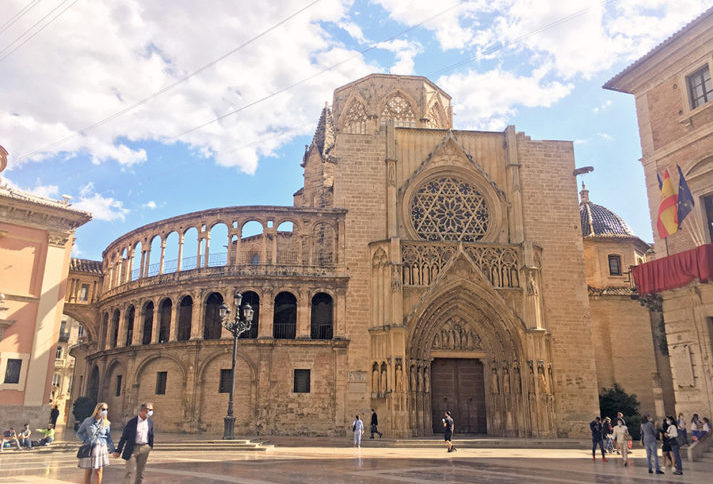
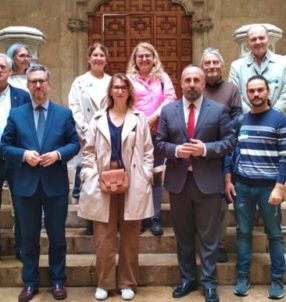

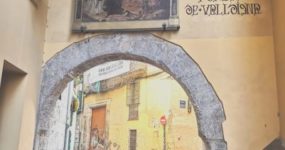
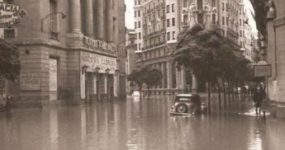
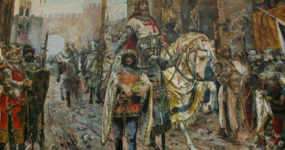

















Leave a comment